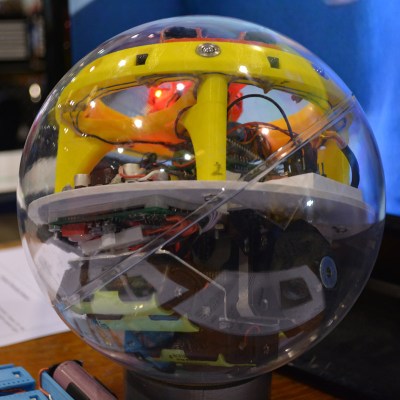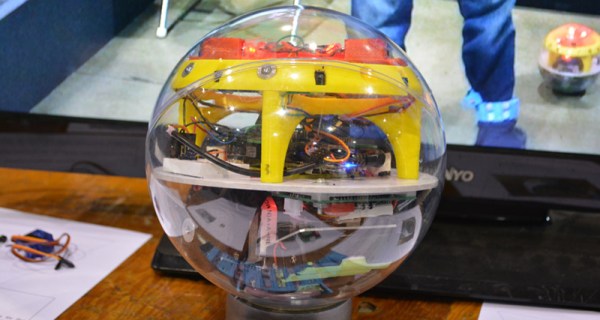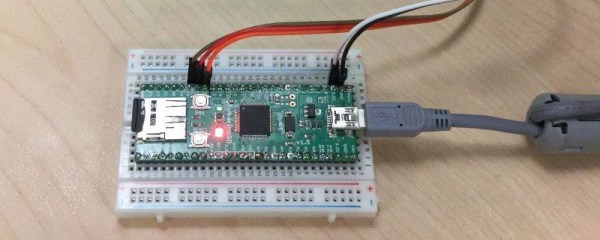A month before the Bay Area Maker Faire, there were ominous predictions the entire faire would be filled with BB-8 droids, the cute astromech ball bot we’ll be seeing more of when The Force Awakens this December. This prediction proved to be premature. There were plenty of R2 units droiding around the faire, but not a single BB-8. Perhaps at the NYC Maker Faire this September.
 Regarding ball bots, we did have one friendly rolling companion at Maker Faire this year. It was a project by UC Davis students [Henjiu Kang], [Yi Lu], and [Yunan Song] that rolls around, seeking out whoever is wearing an infrared ankle strap. They team is calling it Project Naughty Ball, but we’re going to call it the first step towards a miniature BB-8 droid.
Regarding ball bots, we did have one friendly rolling companion at Maker Faire this year. It was a project by UC Davis students [Henjiu Kang], [Yi Lu], and [Yunan Song] that rolls around, seeking out whoever is wearing an infrared ankle strap. They team is calling it Project Naughty Ball, but we’re going to call it the first step towards a miniature BB-8 droid.
The design of the Naughty Ball is somewhat ingenious; it’s set up as a two-wheel balancing bot inside a clear plasic sphere. A ton of batteries work well enough as the ballast, stepper motors and machined plastic wheels balance and steer the ball bot, and the structure on the top hemisphere of the ball houses all the interesting electronics.
There is a BeagleBone Black with WiFi adapter, a few motor drivers, an IMU, and a very interesting 3D printed mount that spins the robot’s eyes – infrared cameras that spin around inside the ball and track whoever is wearing that IR transmitting ankle band.
As far as robotics project go, you really can’t do better at Maker Faire than a semi-autonomous ball bot that follows its owner, and the amount of work these guys have put into this project sends it to the next level. You can check out a video description of their project below.




 Last week’s prize was a
Last week’s prize was a 


















